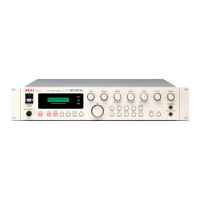
Do you have a question about the Akai EWI 3030m and is the answer not in the manual?
| Key Range | 8 Octaves |
|---|---|
| Polyphony | 16 voices |
| Octave Keys | Yes |
| Breath Sensor | Yes |
| Bite Sensor | Yes |
| MIDI Output | Yes |
| MIDI Channels | 16 |
| Type | Wind Controller |
| Connectivity | MIDI |
| Power Supply | AC adapter |
| Compatibility | Compatible with MIDI software and hardware |
| Sound Engine | Internal sound generator |
| Effects | Reverb, delay |
| Inputs | Breath sensor |
| Outputs | MIDI Out |
| MIDI | Yes |
Explains electrical safety symbols, warnings, and cautions for safe operation.
Describes all buttons, knobs, and the LCD on the front panel for operation.
Details all input and output jacks and connectors for system integration.
Using the mouthpiece and breath for volume and expressive control.
Describes the power button and the 16-character LCD display.
Details on TUNE, GLIDE, BEND, EXT.IN, and VOLUME knobs.
Explains VIBRATO, BREATH, REVERB, and TRANS buttons.
Describes SOUND/PROG, SENS, MIDI, BREATH, EDIT, and DATA keys.
Details LINE OUT, EXT.IN jacks for audio connections.
Describes MIDI IN/OUT/THRU, INSTRUMENT IN/OUT, and AC Power Inlet.
Instructions for connecting the EWI3020 controller to the EWI3030m.
Connecting to speakers, external MIDI devices, and layering modules.
Using bend plates for pitch modulation effects.
Using the glide plate for smooth pitch transitions.
Fine-tuning breath control for optimal sound production.
Fine-tuning the breath sensor's response using the SENS knob.
Detailed steps to set up glide sensitivity and time for expressive pitch changes.
Detailed steps to set up bend sensitivity for pitch bending.
Finalizing bend setup and understanding its range and LED indicators.
Detailed steps to set up vibrato sensitivity using the mouthpiece.
Navigating through parameters and adjusting their values using knobs/keys.
Adjusting BREATH FILTER and BREATH VOLUME for tone and volume shaping.
Choosing WAVE A/B, tuning, and setting transposition for Wave A.
Selecting playback mode (1 or 2 waves) and crossfade time between notes.
Adjusting the cut-off frequency of the low-pass filter.
Key follow for cutoff and resonance adjustments, including key note influence.
Breath and key note control of filter resonance.
Setting LFO speed (frequency) and delay time before modulation starts.
Modulating pitch, pulse width, and mix balance with LFO.
Modulating filter cutoff and resonance values with the LFO.
Setting envelope attack time, decay time, and velocity response.
Setting lip-controlled pitch modulation depth for Wave A and B.
Setting the period of pitch change for glide effect on Wave A and B.
Setting LFO modulation depth to control the glide effect.
LFO modulation of pulse width and mix balance for glide effect.
LFO modulation of filter cutoff and resonance for glide effect.
Setting the pitch bend range for Wave A and Wave B sounds.